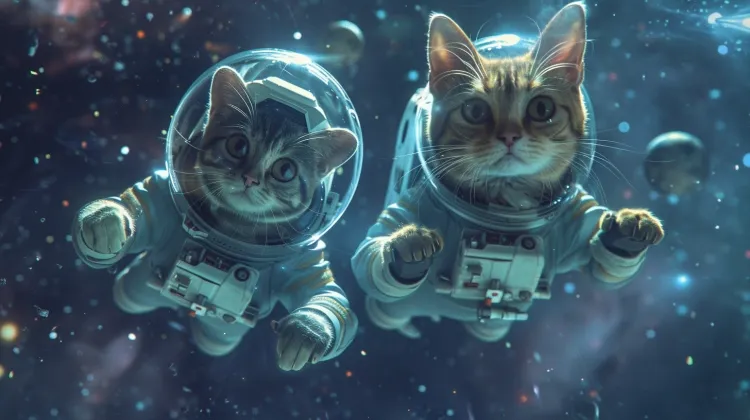NASA's Innovative Leap: Transmitting HD Cat Videos from Space
NASA has achieved a remarkable feat by successfully sending a high-definition cat video from space to Earth using a cutting-edge laser communication system. This groundbreaking transmission, covering a staggering distance of 31 million kilometers, showcases the potential of laser technology in enhancing data transmission capabilities for future space missions.

The Cat Video Phenomenon
The 15-second video features an adorable orange tabby named Taters, captivating viewers as it streams from deep space. This initiative not only demonstrates the feasibility of high-data-rate communications but also serves as a playful reminder of the intersection between technology and popular culture. The transmission was made possible through a laser transceiver aboard the Psyche probe, which is currently exploring a mysterious metal-rich asteroid located in the main asteroid belt between Mars and Jupiter.
High-Tech Communication
Traditionally, space missions have depended on radio waves for data transmission, but NASA's innovative use of lasers has the potential to increase data rates by a remarkable 10 to 100 times. The Psyche probe, at the time of the transmission, was positioned 80 times the distance between the Moon and Earth. The encoded near-infrared signal was received by the Hale Telescope at Caltech’s Palomar Observatory in San Diego County and then transmitted to NASA's Jet Propulsion Laboratory (JPL) in Southern California.
Significance of the Transmission
Bill Klipstein, the tech demos project manager at JPL, highlighted the importance of this demonstration, stating, "One of the goals is to demonstrate the ability to transmit broadband video across millions of miles." While typical missions send packets of random data, this fun cat video was created in collaboration with JPL designers to commemorate the event. The video took just 101 seconds to reach Earth at a maximum bit rate of 267 megabits per second, surpassing standard home broadband speeds.
A Nod to History and Culture
This whimsical transmission has roots in historical significance, as it connects to the early days of television interest in America during the 1920s when Felix the Cat was broadcast as a test image. Cats, beloved by many, continue to dominate the realm of viral internet content, making the choice of a cat video a fitting tribute to contemporary meme culture.
Conclusion
NASA's successful transmission of Taters the cat video not only marks a significant technological milestone but also emphasizes the agency's commitment to pushing boundaries in space exploration. As we look forward to future missions, this event serves as a reminder of the blend of innovation and lightheartedness that can accompany scientific advancements. Stay tuned for more incredible stories from the world of space exploration!
What's Your Reaction?















